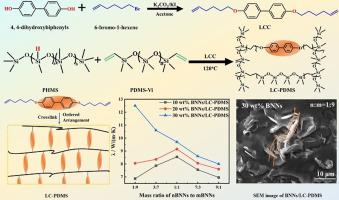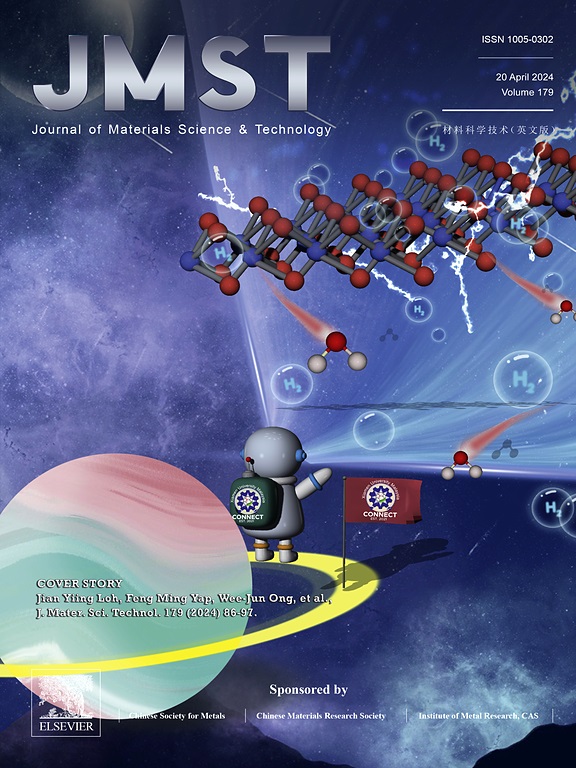Enhancing thermal conductivity in polysiloxane composites through synergistic design of liquid crystals and boron nitride nanosheets
IF 11.2
1区 材料科学
Q1 MATERIALS SCIENCE, MULTIDISCIPLINARY
引用次数: 0
Abstract
Polysiloxane-based thermally conductive composites are essential for electronic heat management, but they face challenges such as limited thermal conductivity enhancement and low improvement efficiency. In this work, a novel liquid crystal crosslinker (LCC) based on biphenyl liquid crystal moieties was synthesized. Liquid crystal polydimethylsiloxane (LC-PDMS) with intrinsic high λ was prepared by crosslinking vinyl/methyl-hydrogen functionalized PDMS by LCC at its liquid crystal transition temperature, and boron nitride nanosheets (BNNs) with different particle sizes were used to prepare BNNs/LC-PDMS composites.When the mass ratio of LCC to vinyl-terminated PDMS is 2:1, the LC-PDMS exhibitsa well-ordered liquid crystal phase, and its λ∥ reachesthe maximum value of 0.34 W(mK)−1, approximately 1.7 times that of general PDMS (0.20 W(mK)−1). The λ∥ of BNNs/LC-PDMS composites increases with the addition of BNNs, and when the mass fraction of BNNs reaches30 wt%, with a 1:9 mass ratio of small BNNs (1 μm) to large BNNs (10 μm), the composite achieves the highest λ∥ of 12.50 W(mK)−1, a 68.5% increase compared to BNNs/PMDS composites containing the same amount of BNNs (7.42 W(mK)−1). Additionally, BNNs/LC-PDMS composites also demonstrate excellent electrical insulation properties and low density, making them promising candidates for applications in highly integrated electronics fields.

求助全文
约1分钟内获得全文
求助全文
来源期刊

Journal of Materials Science & Technology
工程技术-材料科学:综合
CiteScore
20.00
自引率
11.00%
发文量
995
审稿时长
13 days
期刊介绍:
Journal of Materials Science & Technology strives to promote global collaboration in the field of materials science and technology. It primarily publishes original research papers, invited review articles, letters, research notes, and summaries of scientific achievements. The journal covers a wide range of materials science and technology topics, including metallic materials, inorganic nonmetallic materials, and composite materials.
 求助内容:
求助内容: 应助结果提醒方式:
应助结果提醒方式:


